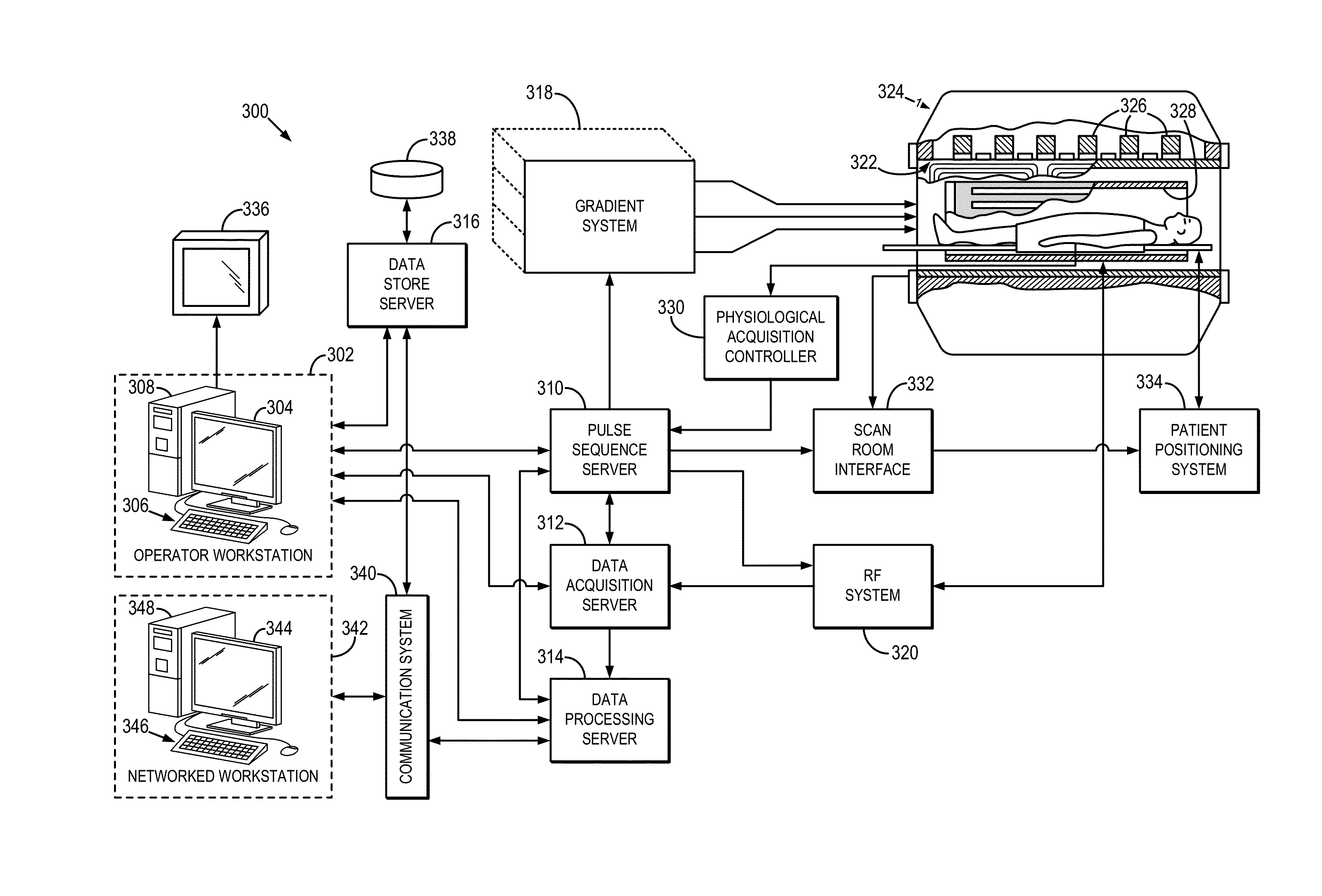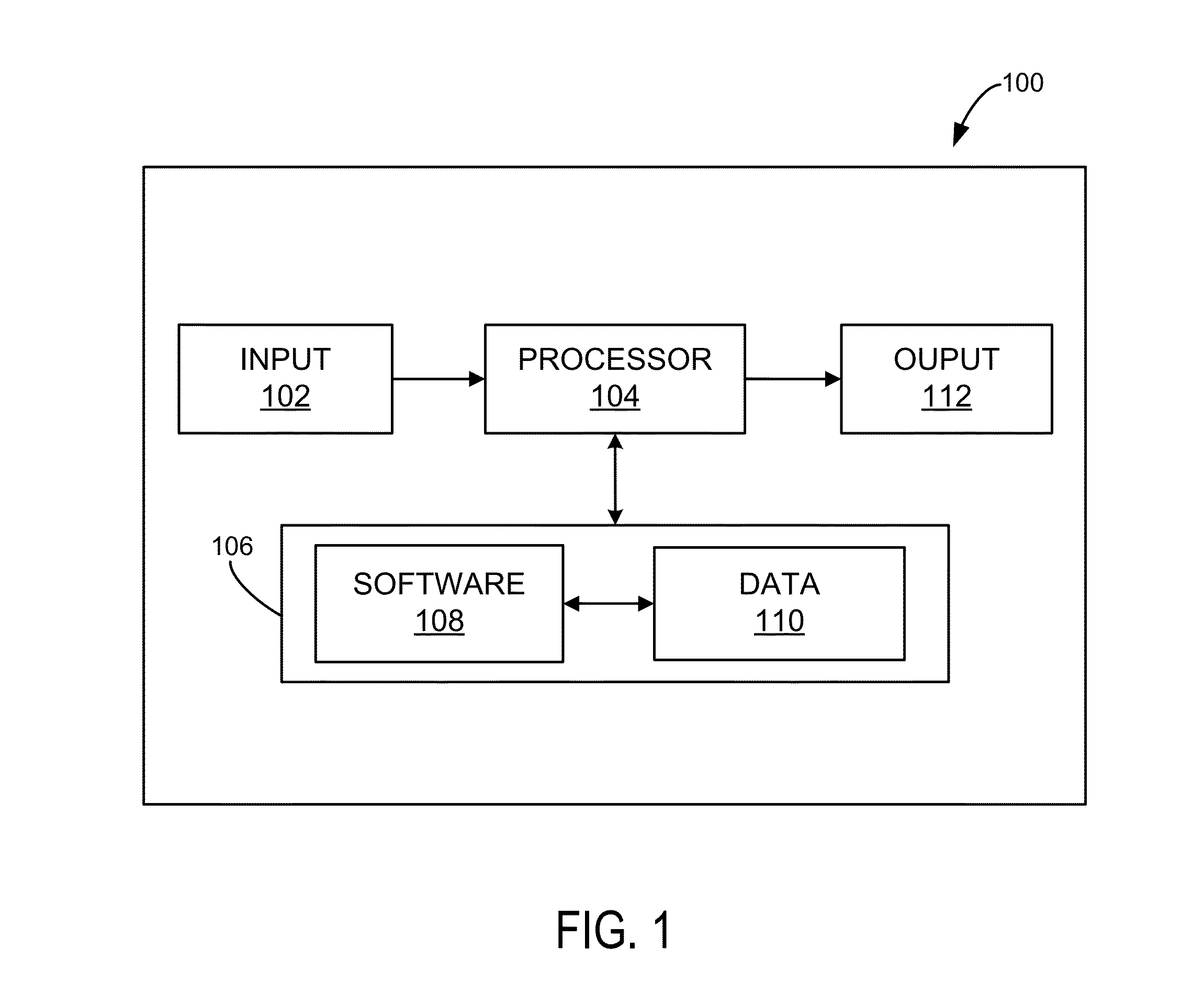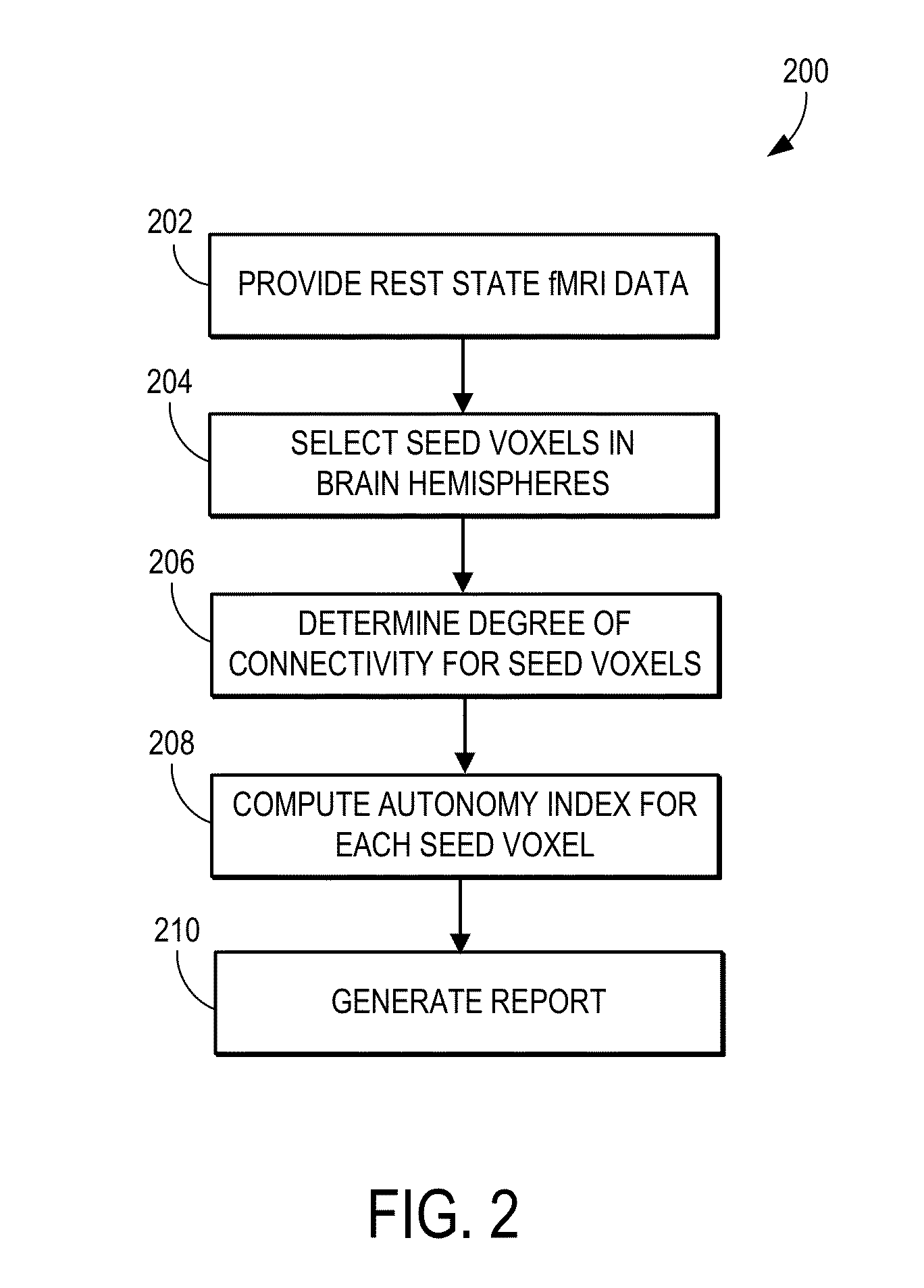System and Method For Measuring Functional Brain Specialization
a functional brain and specialization technology, applied in the field of functional magnetic resonance imaging systems and methods, can solve problems such as difficult mapping of this heterogeneous distribution of specialization across the cortex
- Summary
- Abstract
- Description
- Claims
- Application Information
AI Technical Summary
Benefits of technology
Problems solved by technology
Method used
Image
Examples
example i
[0046]The present study revealed that hemispheric specialization has a nonuniform distribution across the cerebral cortex. Specialization is strongest in the heteromodal association regions that are estimated to preferentially depend on relatively small callosal fibers and are also characterized by preferential long-range functional connectivity. Pathways for associative processing are critical for achieving behavioral flexibility but require integration among brain regions that are far apart. Given that crosshemispheric transfer incurs extra processing costs, specialization of these circuits may bring advantages for time-critical tasks. By contrast, unimodal systems in each hemisphere include local, modular processing circuits often connected to midline or mirrored body representations that necessarily require interaction between the two hemispheres.
Methods
Participants
[0047]Two datasets with a total of 1006 young healthy participants were employed in the present study. The first da...
PUM
 Login to View More
Login to View More Abstract
Description
Claims
Application Information
 Login to View More
Login to View More - R&D
- Intellectual Property
- Life Sciences
- Materials
- Tech Scout
- Unparalleled Data Quality
- Higher Quality Content
- 60% Fewer Hallucinations
Browse by: Latest US Patents, China's latest patents, Technical Efficacy Thesaurus, Application Domain, Technology Topic, Popular Technical Reports.
© 2025 PatSnap. All rights reserved.Legal|Privacy policy|Modern Slavery Act Transparency Statement|Sitemap|About US| Contact US: help@patsnap.com



